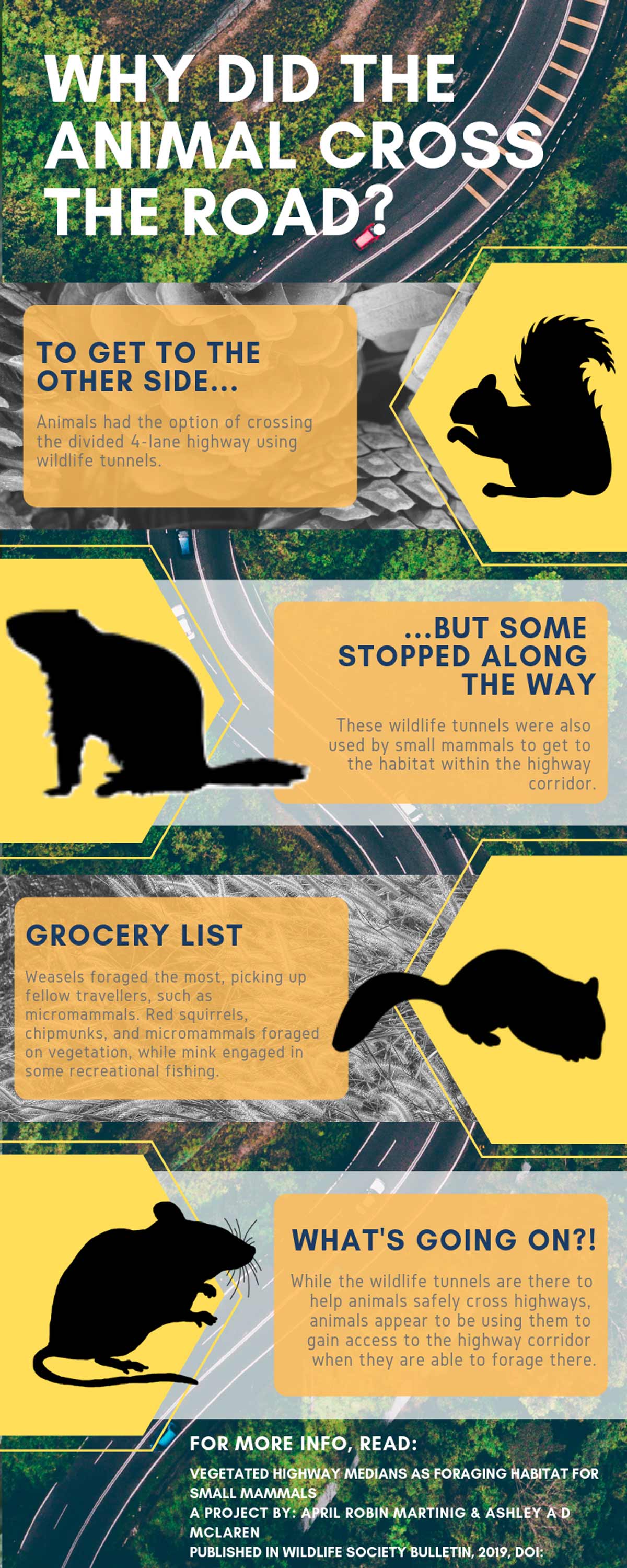
Vegetated highway medians provide a source of food for small mammals, according to a new study by UAlberta biologists.
Vegetated highway medians are a proverbial buffet for small mammals, according to new research by University of Alberta biologists. Animals such as weasels, mink, and chipmunks use the roadside bands of vegetation as habitat to find food.
"We observed animals foraging for everything from other mammals, such as red squirrels looking for birds, to vegetation, like chipmunks with full cheek pouches," said April Martinig, PhD student in the Department of Biological Sciences and lead author on the study. "Weasels were the most likely species to forage in the vegetated median, followed by red squirrels, chipmunks, mice, voles, shrews, moles, and mink."
The researchers collected data over a three-year period using infrared cameras situated at six different locations along a four-lane highway with vegetated medians in Quebec. The results show many small mammals accessing the medians through wildlife passages, which are designed to help animals circumvent human-made barriers, such as roadways.
"I did not expect to see such a wide variety of foraging behaviour," explained Martinig, who is conducting her PhD studies under the supervision of Professor Stan Boutin. "I also did not expect to see animals using the wildlife passages specifically to forage since the prevailing assumption is that animals use wildlife passages to cross highways, not spend time in the habitat between highway lanes."
Food for thought
So, should we be maintaining a vegetated median between highway lanes as foraging habitat for animals?
"While my research doesn't say anything about the wider ecosystem-short of showing how flexible and adaptable animals can be-it does have practical implications," said Martinig. "Maintaining habitat between highway lanes such as with a vegetated median and not providing safe access to it with something like wildlife passages might attract animals to roads, where they are at an increased risk of collisions with vehicles."
The paper, "Vegetated Highway Medians as Foraging Habitat for Small Mammals," was published in the Wildlife Society Bulletin (doi: 10.1002/wsb.967)